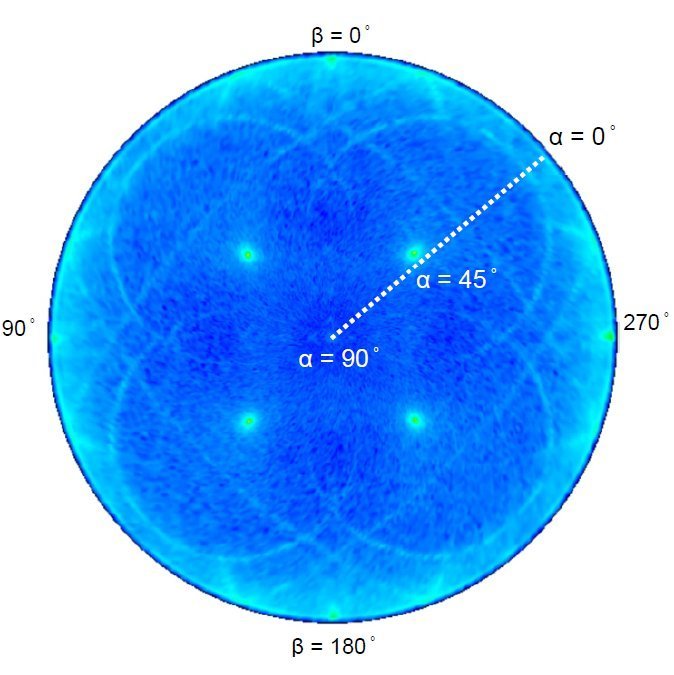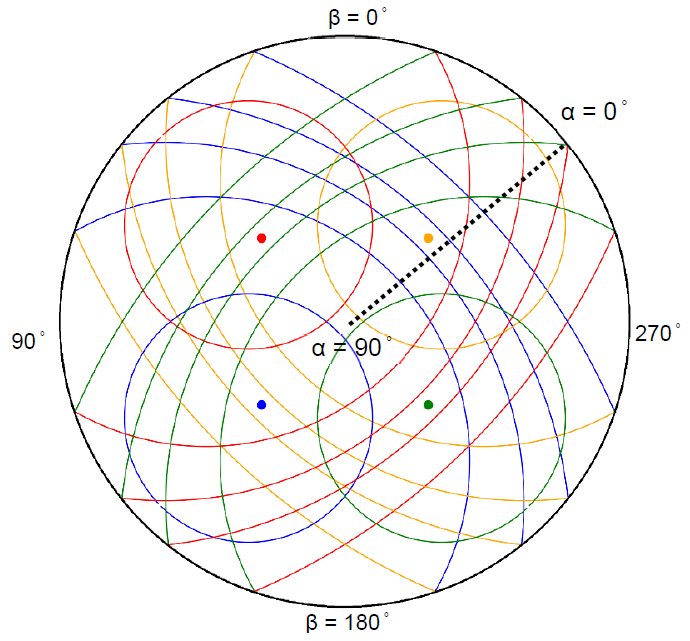Off-normal Fiber Texture Analysis by Pole Figure Measurement
Introduction
The orientation state of crystal grains of thin film materials determines various electrical, magnetic, mechanical and optoelectric properties. Random orientation, fiber texture, and epitaxial alignment are generally distinguished as types of crystal orientation state. Also, specific combinations of single crystal substrates and their surface treatment and film material sometimes show a more complex state of orientation, such as fiber texture or epitaxial alignment that is lying off-normal to the sample surface. In-plane pole figure measurement, a type of pole figure measurement performed by a goniometer equipped with an in-plane arm, allows the recording of a complete pole figure and the detection of diffraction signals from thin films with a relatively small thickness. This helps to evaluate thin film materials with complex orientation state.
Measurement and analysis
Ni was deposited on a Si 100 wafer and annealed to fabricate a NiSi film with a thickness of approximately 25 nm. In-plane pole figure measurement of the NiSi film was performed with the diffraction angle 2θ = 47.3˚ (Figure 1). With the resolution of the optical system used here, diffraction signals of both Si 220 (2θ = 47.3˚) and NiSi 211 (2θ = 47.2˚) were detected. The obtained pole figure showed a four-fold symmetric pattern, including intense Si {110} poles (at α=45˚) and fragments of concentric circles. Figure 2 shows a simulated pole figure of NiSi 211 calculated with an assumption of NiSi 211 fiber texture with the fiber axes at Si {110} poles. From the comparison between simulated and experimental pole figures, all of the arc-shaped lines were identified as NiSi 211 diffraction signals.
The arc-shaped lines were observed more clearly in the low α region. This is because the X-ray incident angle becomes smaller in this region, therefore a large area of the thin NiSi film is illuminated. In-plane pole figure measurement enables us to measure and analyze this region, and reveals the complex orientation state of thin films.

Figure 1: NiSi 211 in-plane pole figure.

Figure 2: Simulated pole figure NiSi 211 (assuming off-normal NiSi 211 fiber texture).

Contact Us
Whether you're interested in getting a quote, want a demo, need technical support, or simply have a question, we're here to help.
